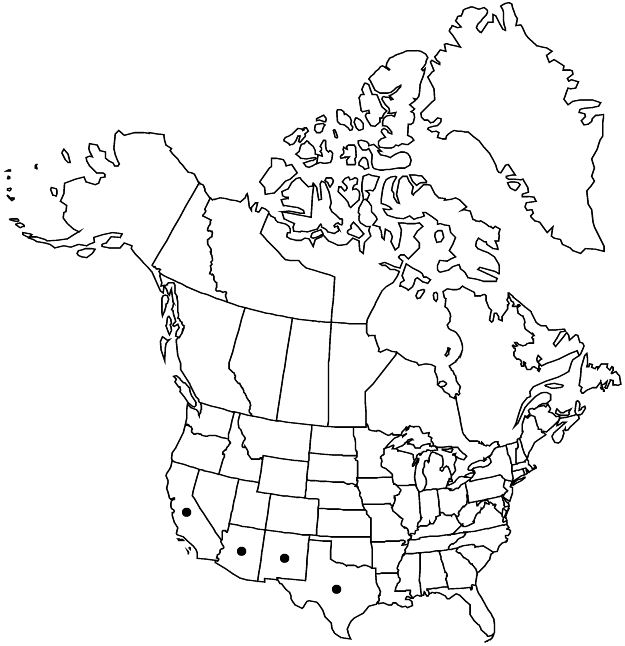Anoda pentaschista
Smithsonian Contr. Knowl. 5(6): 22. 1853.
Subshrubs, widely branching, 1–2 m. Stems erect, often purplish, minutely stellate-hairy, hairs to 0.1 mm, glabrescent. Leaves: petiole commonly 1/4 length of blade (longer on juvenile leaves), minutely stellate-hairy, hairs to 0.1 mm; blade markedly discolorous, highly variable in form and size, often narrowly oblong or linear, usually 1.5+ cm, coriaceous, base sometimes hastate, margins usually entire, apex acute, surfaces ± tomentulose. Inflorescences panicles. Pedicels 1.5–3.5 cm. Flowers: calyx 3–5 mm, lobes with dark midribs, apex acute, minutely hairy; petals pale yellow, sometimes fading reddish, 10 mm; staminal column apically scabrid, otherwise glabrous; style 5–8-branched; stigmas glabrous. Schizocarps 4–5 mm diam., minutely hairy; mericarps 5–8, with dorsal spur to 0.5 mm. Seeds without enclosing endocarp. 2n = 30.
Phenology: Flowering late summer–mid winter.
Habitat: Disturbed sites, roadsides, agricultural fields
Elevation: 100–600(–1500) m
Distribution

Ariz., Calif., N.Mex., Tex., Mexico.
Discussion
Anoda pentaschista occurs widely in Mexico mostly at lower elevations from Baja California south to Oaxaca. It has been found in the southern coastal bend of Texas south to Cameron County; in Hidalgo County, New Mexico; in Cochise, Maricopa, and Pima counties in Arizona; and as an introduction in Imperial County, California.
Selected References
None.